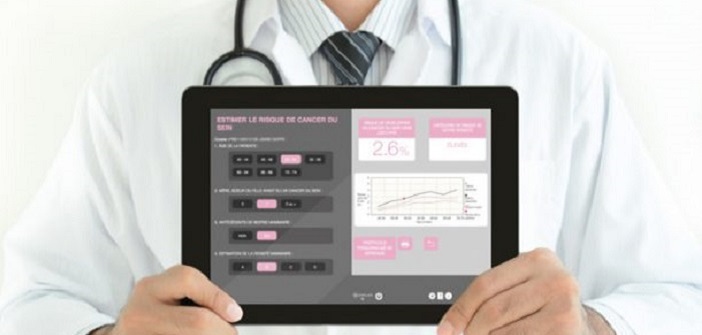Developed in collaboration with the Gustave Roussy Institute in Paris and the Breast Cancer Screening Consortium in the United States, MammoRisk is a new test that allows for a better assessment of the likelihood of breast cancer development in women. An interview with Dr. Bruno Borens, who is part of the Riviera Medical Imaging group, also a radiologist and senologist, and coordinator of the radiology department at the Santa Maria Breast Institute in Nice, the only institute in Nice to have been performing this test for a few weeks.
What does this new test consist of?
It consists of compiling several elements that result in a risk consultation with the objective of defining each woman’s breast cancer risk over five years and positioning them at a level of danger.
How does it work?
This test combines a clinical data questionnaire, breast density visible on mammograms depending on the type of breast, and a saliva-based PRS test that identifies DNA variations through a buccal mucosa swab. Then, these three elements are entered into an algorithmic box, which provides a statistical estimation of breast cancer risk within five years.
Who is this test intended for overall?
It’s designed for women starting from the age of 40 because this is the time when screening is relatively recommended by various studies. Why this age? Because an initial mammogram is necessary to input breast density data into the test.
Practically, does this test allow for extending or reducing the interval between two mammograms?
We can certainly decrease the screening frequency for a patient who is at low risk, telling her that every two years is sufficient. Conversely, for a patient with a higher risk, we would advise more frequent screenings. The aim of screening is not prevention per se because that would mean preventing it from happening. It’s not that; screening should allow us to detect a tumor while it’s still small to have a better prognosis than if we have to treat a larger one. It’s basic, but that’s the reality; which is why we call it screening, so we do not wait until a lump is felt in the breast, but we can detect it in advance.
Is this test only for women?
Yes, because breast cancer screening in France and worldwide targets only women, as it’s extremely rare in men. There is no policy for generalized screening.
How long does it take to get the result?
It takes on average between three weeks and a month. The swab is sent to the Curie Institute in Paris for analysis. For now, it can only be done there, but if it becomes widespread, many others will be able to process the analyses.
Is it free?
The test is not reimbursed by social security because there is currently no coding for it. It’s something new, so as with many things with social security, it takes time and they are not very inclined to reimburse new things. Therefore, this test, when conducted as described, costs €350. This is justified by the fact that it’s a genetic test sent to Paris, which incurs costs.
How effective is this test?
I don’t have precise values. It’s a test that took time to develop, done in partnership with the Gustave Roussy Institute in Paris, and which is now used in a European scientific study called MyPeBS, a multi-scientific study aimed at segmenting patients into risk groups over the next six to seven years. We have great confidence in this study, which holds high value for us.
What is the long-term goal?
We want to move away from non-individualized screening to achieve personalized care. In the future, we need to differentiate patients based on risk categories for various pathologies and direct them toward different types of examinations to search for specific issues.


